Category: Ingleby Incline
-
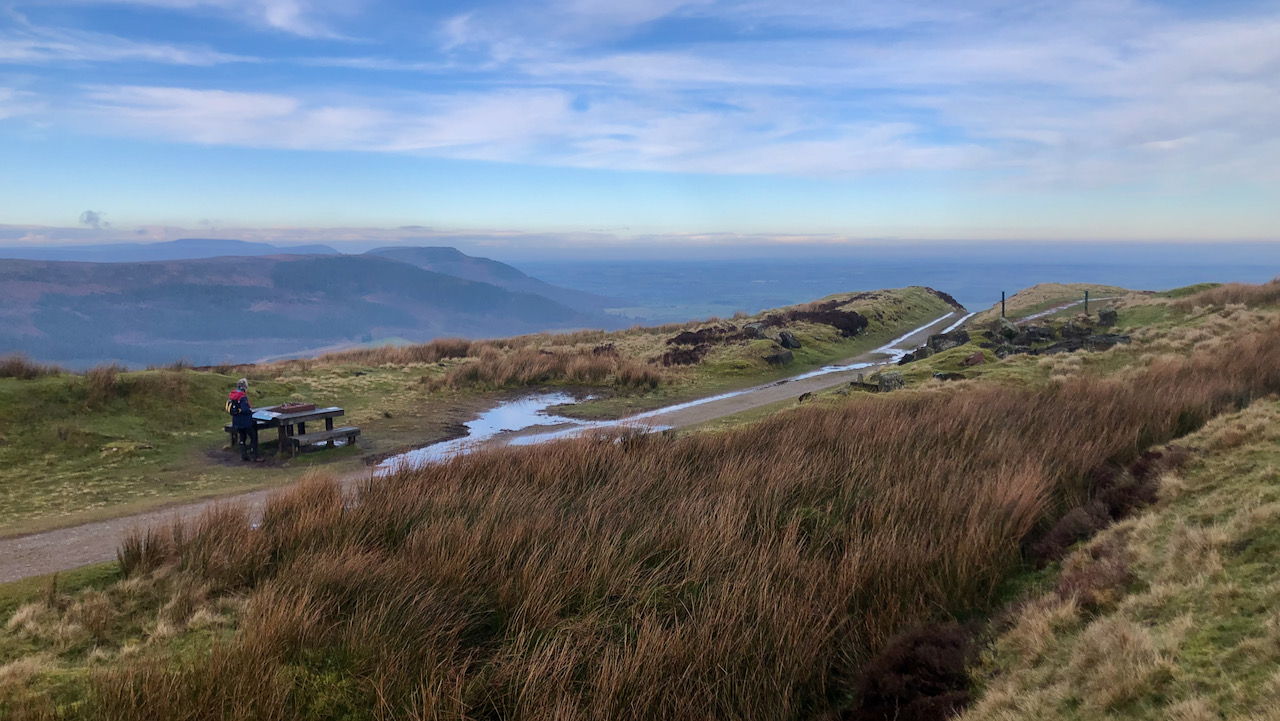
Siberia on the Moors — A Lost Railway Community
For nigh on seventy years, this exposed stretch on Greenhow Moor, with its splendid panorama of the Cleveland Plain and beyond, served as home for a community of railway workers and their families. Sited at the top of the Ingleby Incline, a cluster of building once stood here, in a location so remote and exposed…
-
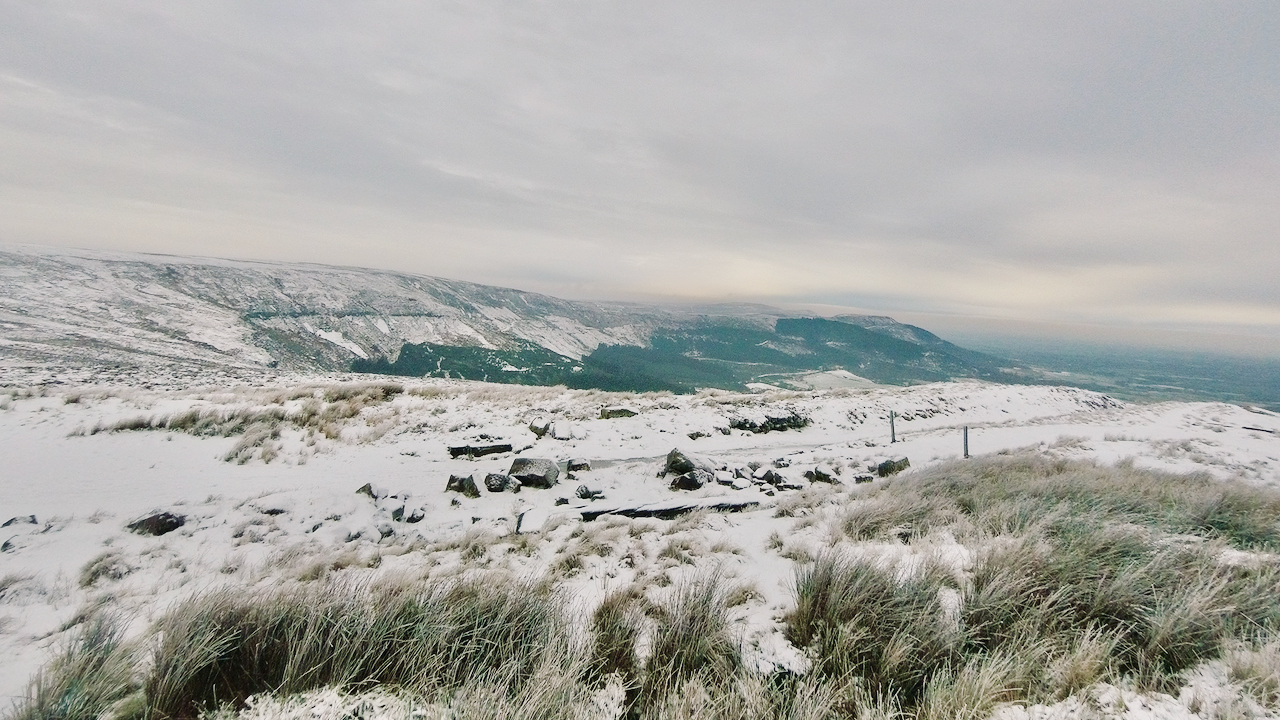
Quiz time: what is a scud?
If you’d have asked me a week or so ago, I would have said a Scud was a Soviet Union designed ballistic missiles used in the Iraq war. I have since learnt that a scud is a glider, a low-level detached, irregular cloud, and an acronym that is too crude for me to repeat here,…
-

Incline Top
My morning constitutional today featured a one way run from Bank Foot to Clay Bank over Urra Moor. And to save a bit of time I used the old railway incline to ascend to the moor top. I’d forgotten how much of a slog it is. Nowadays, I am, more often than not, descending on…
-

Ingleby Incline
The old railway incline for the Rosedale Branch ironstone railway. Almost a mile long with a maximum gradient of 1 in 5. A rake of trucks full of iron ore would be lowered down by a steel rope, which looped around a drum at the top and pulled up a rake of empty trucks. Speeds…
-
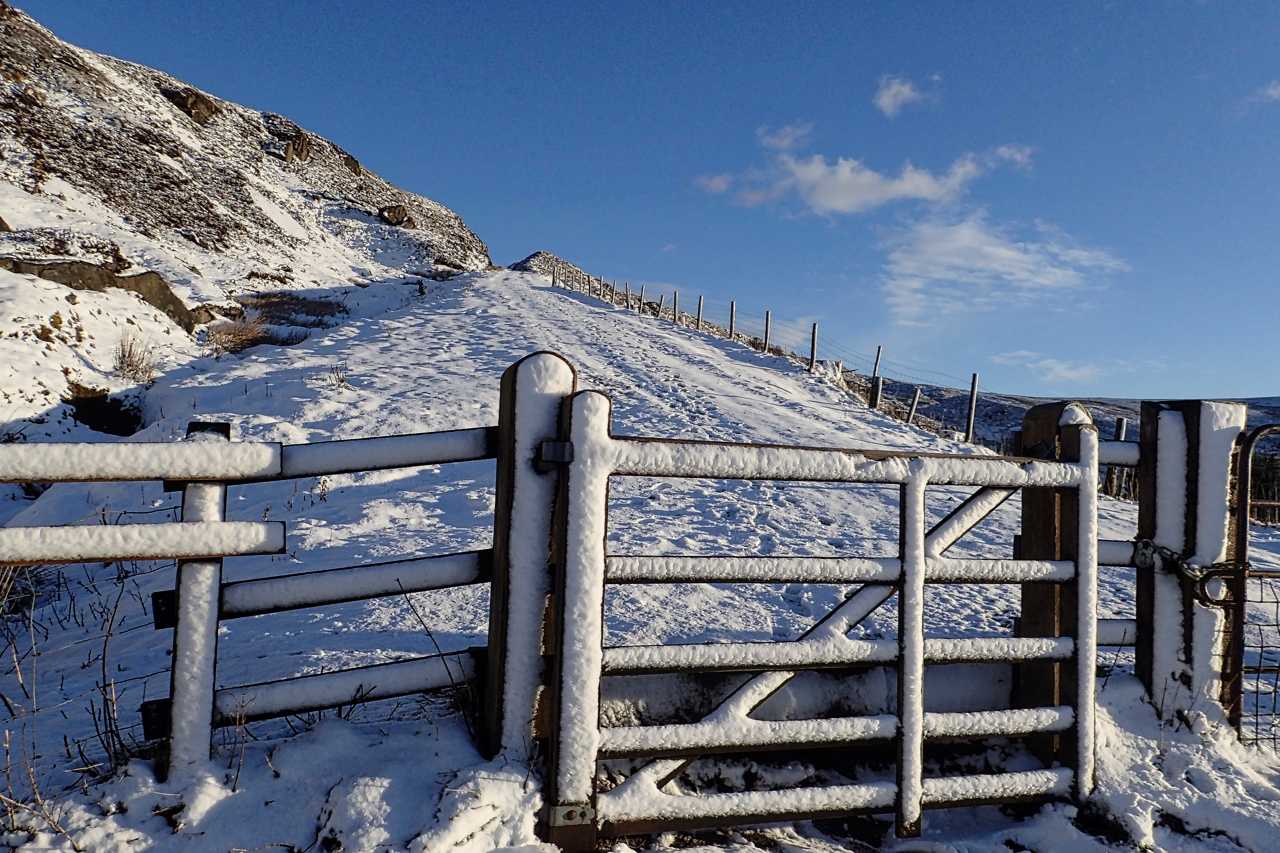
Halfway up the Incline
The halfway gate, good fresh snow and blue skies. Magic. The mile-long incline, maximum gradient 1 in 4½, came into operation in 1861 to transport ore from the Rosedale Ironstone Mines. At the peak of ironstone production 1000-1500 tons was hauled down daily, operations continuing throughout the night. The incline was self acting, that is,…
-
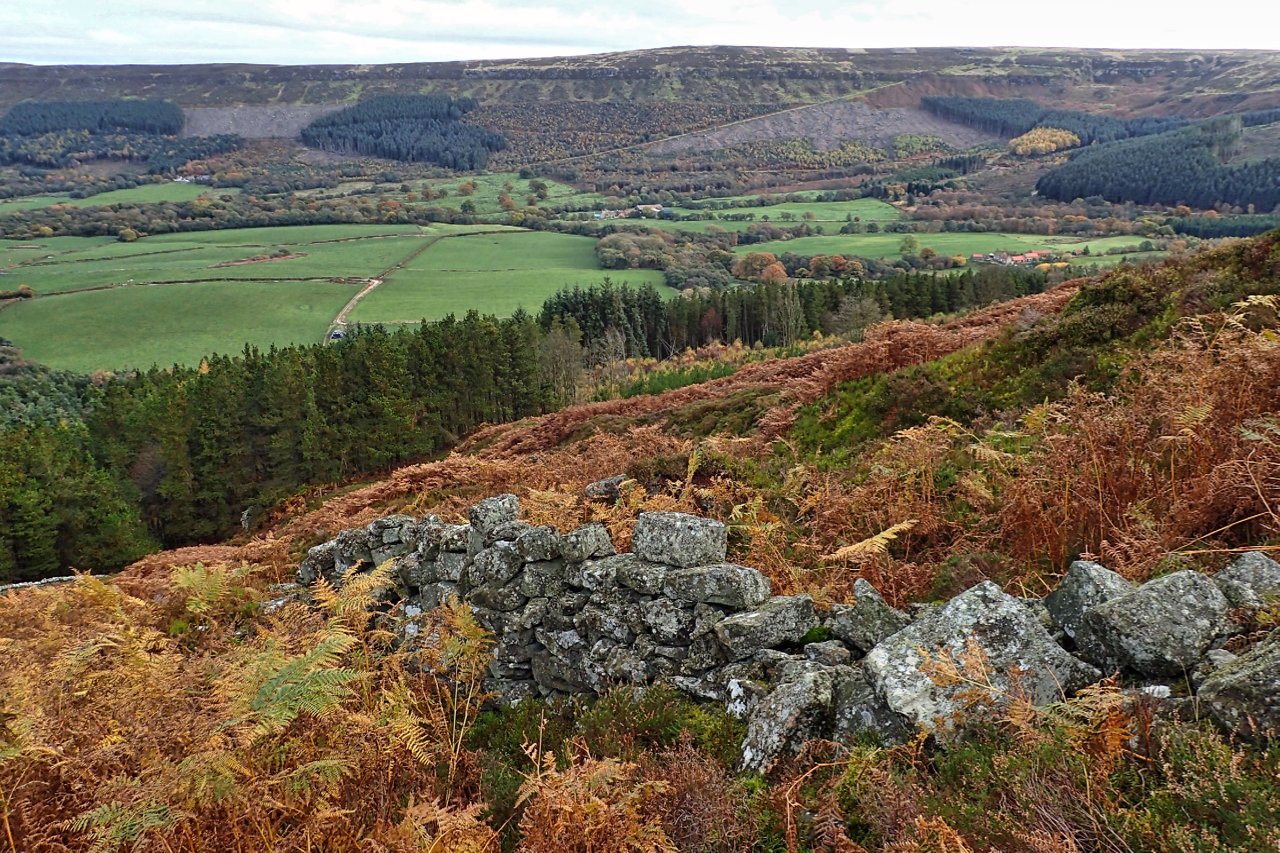
Greenhow Botton
Orginally posted on 2 Nov, 2016 my old site Most of the steep banks guarding the western edge of the North York Moors take their name from the community or parish at their foot so we have Ingleby Bank and Greenhow Bank. Jackson’s Bank, overlooking the flat valley of Greenhow Botton is an exception although…
-
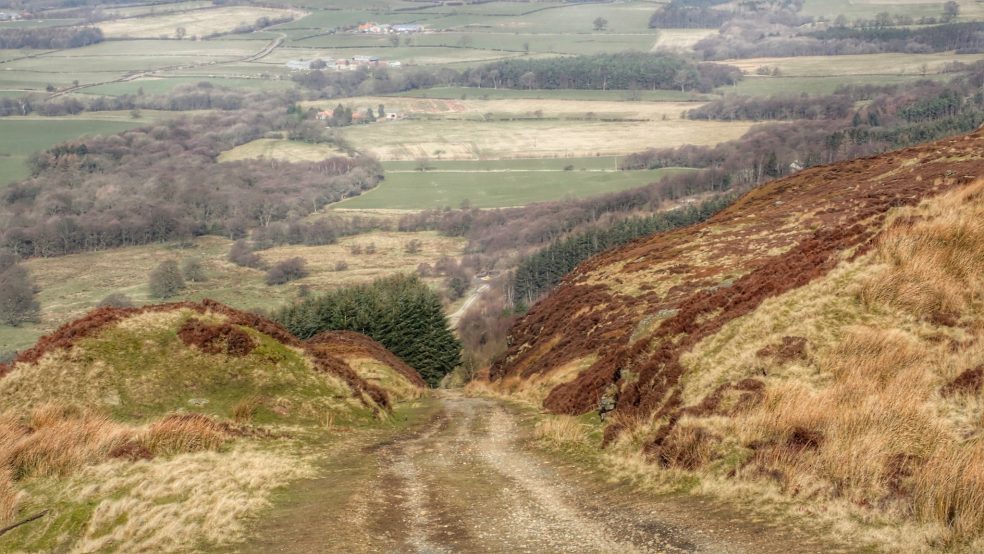
Ingleby Incline
Ingleby Incline, the familiar diagonal scar climbing the Cleveland Hills, was in operation between 1861 and 1929 and connected the North Eastern Railway at Battersby with the ironstone mines in Rosedale. It was a self acting incline, that is loaded wagons pulled descending under gravity pulled up empty wagons. Both rakes of wagons controlled by a…